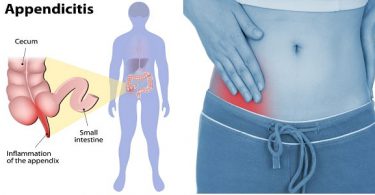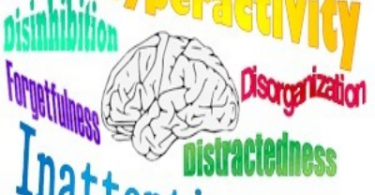Medicine today is indulging in a positive orgy of biochemistry, entailing multiple investigations, some carrying risk and many much inconvenience to the subjects of research.In spite of all this and the drastic new drugs poured on to the market by the chemists, the manufacturing kind, not the chap in the chemist shop who nowadays is little more than a distributing agent for the drug houses-this sentence has grown too long what it started out to say was that in spite of massive investigation and a galaxy of new drugs there is still a great deal of sickness and ill-health.
Moreover there are stillmany types of illness thatare poorly understoodand in connection with which treatment is far from satisfactory. One such is asthma, an affliction which can have the most dire effects on the activities and happiness of its victim.
The literature speaks of the “confused state of classification and even of definition of
the word itself’. Some divide the condition into intrinsic and extrinsic types, the latter
when the attacks can be attributed to some definite irritant or allergen, dust, pollen,
effluvia of cat or horse, mineral dust, bacteria and so on. But a constitutional liability is
probably present whatever the type.
This is borne out by the experience of one sufferer from asthma, allergic to fish and
various animal hair, who found that an attack could be brought on by “purely reflex
stimulation or psychological causes”. A drop of saliva swallowed “the wrong” way could
start an immediate spasm.
The writer also records that “when breathing quite freely I once saw a child run into
the road in front of an approaching car, and in thirty seconds I was hanging on to the
railings-so bad was the dyspnoea”.
The literature speaks of “the complex inter-relationship between allergy, infections,
and emotional changes in the aetiology (causation) of asthma”. In the child or adult who
is asthmatic an attack may be precipitated by anyone of a number of causal agents.
The liability, often inherited, is the important factor. Most “asthma cures” are simply
concerned with affording relief to the bronchial spasm present in the attack. They are,
therefore, palliatives not cures.
It is reported that more people are dying from asthma. The increase in mortality has
been among young people as well as old. It seems to be an increase in the case-fatality
rate as there has been no increase in the incidence of the disease.
Those concerned find that “no changes in environment offer plausible explanations”;
and suggest “the possibility that the increase may be associated with changed treatment”.
Aerosols Under Suspicion
With regard to the latter the popularity of treatment with cortisone and
corticosteroids and the widespread use of pressurised aerosols containing
sympathomimetic drugs have come under suspicion.
The latter are associated with cardio-vascular side-effects; unwanted effects of
corticosteroids 1 include moon face, weight gain dyspepsia.? haematemesis,”
hypertension,” diabetes, mental change. Any or all of these side-effects would not
improve the condition of the sufferer from asthma
It is not surprising, therefore, that one reads: “Patients with asthma that cannot be
satisfactorily controlled by other means may require a corticosteroid”. A further snag is
that in children the use of corticosteroids interferes with growth.
Obviously these drugs should not be employed if relief or cure can be achieved by
other means. Also the risk of the use, or the overuse, of pressurised aerosols should be
borne in mind.
The situation thus in relation to asthma, whether aetiology” or treatment, remains
unsatisfactory despite research into causes and the introduction of new drugs.
Experience has shown that Homoeopathy is often most successful in treating asthma;
rather, in treating asthmatics. For it is the individual sufferer who must be studied and
prescribed for rather than the label “asthma”. Homoeopathy has no single “asthma cure”.
Indeed in connection with the individual treatment of asthma Dr. Tyler lists 27 different
remedies with indications.
The constitutional remedy is all important when evident and may of itself effect a
cure. A man of 39, a sufferer from the age of 7, who was typically Pulsatilla obtained.
lasting relief from this remedy. Arsenicum album is often effective in the restless,
overactive, fastidious, worrying type, and so on.
Modalities” are of prime importance. A woman of 31, sufferer since the age of 13,
who was worse from damp and proximity to a canal, responded to Natrum sulphuricum.
Another woman aged 54 had suffered from asthma and chronic bronchitis for 12 years;
recourse to an anti-spasmodic spray was needed frequently both during the day and at
night. She was, however, always much better at the seaside. Medorrhinum initiated a
marked improvement.
Where a causal agent can be tracked down there may be indication for a particular
remedy, possibly a potency of the specific allergen 7• If house dust is the irritant Bromium
will often prove effective.
In some cases where contact with mineral dust at work is a causal factor, it is
obviously advisable to change occupation, and, if necessary, prescribe a potency of the
offending mineral, perhaps Cuprum metallicum.
This dual procedure resulted in a complete cure in a man of 36 who had suffered from
very severe asthmatic attacks which he attributed to working in an atmosphere highly
contaminated with copper.
Importance of Past History
Past history is important. A woman of 39, sufferer for 10 years, revealed that her
mother and brother had died from tuberculosis; Drosera was needed to initiate her
improvement. A man of 51 had suffered from constantly recurring attacks of asthma for
10 years. He gave a history of malaria for the last seven years. Natrum muriaticum dealt
with both the malaria and the asthma.,
It is unfortunately the case that cortisone interferes with the body’s ability to react in
its own defence, and patients under treatment with: the drug are less responsive to
Homoeopathy, at any rate until it has been discontinued. ‘
However, Homoeopathy with its multi-faceted approach and its attention to detail is
well qualified to tackle the problem of asthma whether in children or in adults.
It is not the tool, but the mind, that is at fault when things get out of hand.
Source : Homoeopathy, Rational Medicine





